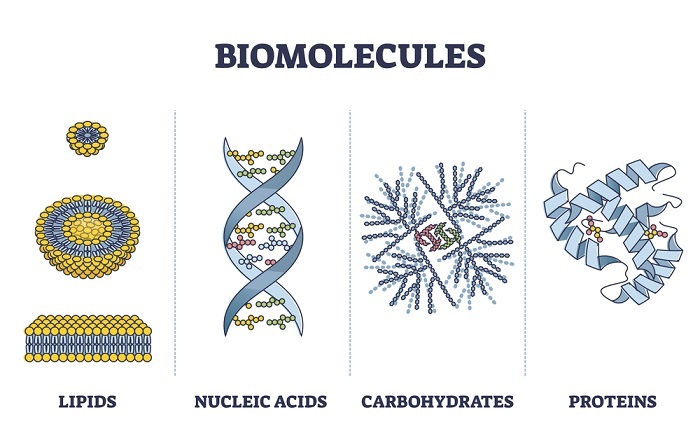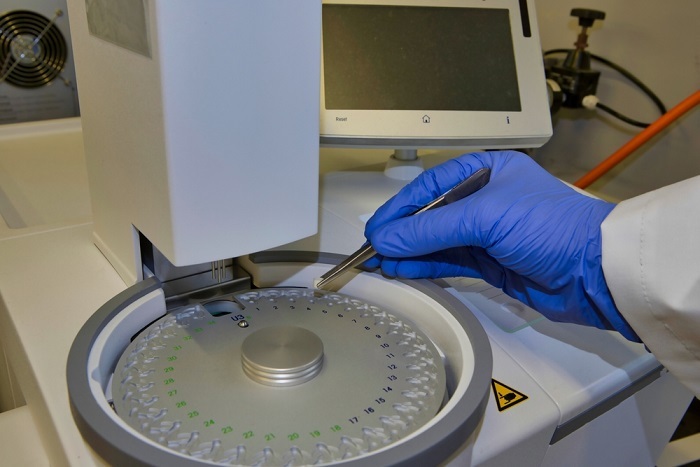
 Data Structure
Data Structure Networking
Networking RDBMS
RDBMS Operating System
Operating System Java
Java MS Excel
MS Excel iOS
iOS HTML
HTML CSS
CSS Android
Android Python
Python C Programming
C Programming C++
C++ C#
C# MongoDB
MongoDB MySQL
MySQL Javascript
Javascript PHP
PHP
- Selected Reading
- UPSC IAS Exams Notes
- Developer's Best Practices
- Questions and Answers
- Effective Resume Writing
- HR Interview Questions
- Computer Glossary
- Who is Who
Biophysical Chemistry: Study of Biological Systems
What is Biophysical Chemistry?
Biophysical chemistry is the science which deals with the study of the biological systems by applying the combination of concepts of both physics (scientific study of both matter and energy and how they interact with each other) and chemistry (Complex application of physics which focuses on the interaction of matter and energy in chemical systems).
The interdisciplinary topic, biophysical chemistry combines the principles of biology, physics and chemistry and whose study mainly focused at the collection and quantitative analysis of data for predictive models of biological systems at a molecular level and chemical sequence level.

Unlike biophysics which covers all the scales of biological organization right from the molecular level to organism and finally populations, biology which focuses on the system's phenotype which is to be studied and biochemistry which mainly focus on functions, role and structure of biomolecules, biophysical chemistry employs different physical chemistry techniques for probing the structure of biological systems. Biosystems are very complex and vast to understand however process becomes easy and simplified when we use physical model to learn how the changes occur in a system every time.
Some of the examples where the biophysical chemistry is applied using the concepts of physics, chemistry and biology includes ?
With the use of physical concepts like quantum mechanics, hydrodynamics, optics, electromagnetic and thermodynamics many biological processes can be explained physiologically such as
Muscle contraction
Neural communication
Vision etc.
The most recent Nobel Prize winning study which falls under the biophysical chemistry category is the X-ray crystallographic studies of ribosome which is the site of protein synthesis. Protein crystals includes the atoms of the whole molecule which are packed into a crystal shape and when X-rays are used causes diffraction of light.

Many biophysical chemists are known to show interest in the topics like protein structures that may include enzyme activity which is either due to shape of substrate molecule or an alteration in its shape when a metal ion is bonded. Also the structural and functional analysis of biological cell membranes using the studies on models of supramolecular structures like liposomes and phospholipids.
By understanding the thermodynamics, we can build the specific protein models. Protein folding is mainly governed by thermodynamics. Proteins tend to be in folded state as it reduces the free energy. Proteins has well defined 3D structures. The science of understanding proteins as molecules with legitimate structures is a new challenge in the present world and Protein Folding is an achievement or challenge in biophysical chemistry Diffusion which is the net movement of particles from high concentration region to low concentration medium until it attains an equilibrium is another interesting area under the umbrella of biophysical chemistry. Here movement of ions across the biological cell membranes is studied.
Fluid mechanics is another interesting area used in the biology where many biological processes involve the movement of particles in fluids for example during blood circulation, gas exchange etc.
Techniques for Study of Biological Systems
Biophysical chemists make the use of different methods of physical chemistry to gain knowledge about the biological systems at both atomic and molecular level. Here the methods are overlapped with the other fields of science like biology, physics, bio-chemistry and chemistry to study the molecular structures, modes of interaction, size and shape, polarity of different biological molecules. The three different biomolecules which are important for the survival of all the living organisms includes proteins, nucleic acids and lipids.
Some of the following techniques of biophysical chemistry which are important to study the structures and functions of biological molecules are discusses below. All the techniques are mainly focused on 4 categories. They are
Thermal Techniques
Differential scanning calorimetry (DSC) and Isothermal Titration Calorimetry (ITC) are the 2 techniques can be discussed in this category. These techniques provide information on nucleic acids about nucleic acids-ligand interactions, protein-ligand interactions.
DSC
It is a type of thermoanalytical technique in which sample cell containing molecules of interest and reference material are maintained at same temperature by heating simultaneously until it reaches a differential point. DSC hence measures the change in heat which is due to absorption or radiation during temperature difference between sample and reference.

ITC
This is yet another type of thermal technique which is sensitive in qualitative and quantitative measuring of energy released due to interactions between sample molecules and the biological reference molecules.
Electrical Techniques
This category of techniques includes using of most versatile and advanced techniques in the biological systems. These methods helps to study these biological systems both in-vivo and in-vitro. These techniques are done using a small electrodes made of carbon fibers to enter the biological cell without causing any damage to it. Patch clamping technique is one such method which involves in recording the ionic current flow from a single ion channel in the biological cell.
Spectroscopic Techniques
Many features of the biological systems are successfully discovered by these category of advanced biophysical chemistry techniques. One of the main technique under this category is X-ray crystallography. This is the primary tool for determining the crystal structures of protein molecules which are macromolecules of biological system. For the proteins which do not form crystals, another tool called Nuclear Magnetic Resonance (NMR) is helpful in determining their structure.
Miscellaneous
Many techniques now made possible to detect the structural changes in proteins which are responsible for their functioning and also to quantify the energetics of biological membranes. Radioactivity-based analysis technique is one such method which uses the radioisotopes to determine the influx and out flux measurement of ions and other substances across the cell membranes.
Conclusion
Biophysical chemistry is an application of basic concepts or principles of physical chemistry to solve the problems in biology. All the living organisms depend mainly on the three important biological molecules whose chemical characteristics are due to their organic and inorganic nature.
Proteins, lipids and nucleic acids are the three main macromolecules within the biological system. Biophysical chemists use many techniques of this field to study the biological molecules within the system. All these techniques are mainly categorized into 4 types that are thermal, electrical, spectroscopic and other miscellaneous group of techniques.

